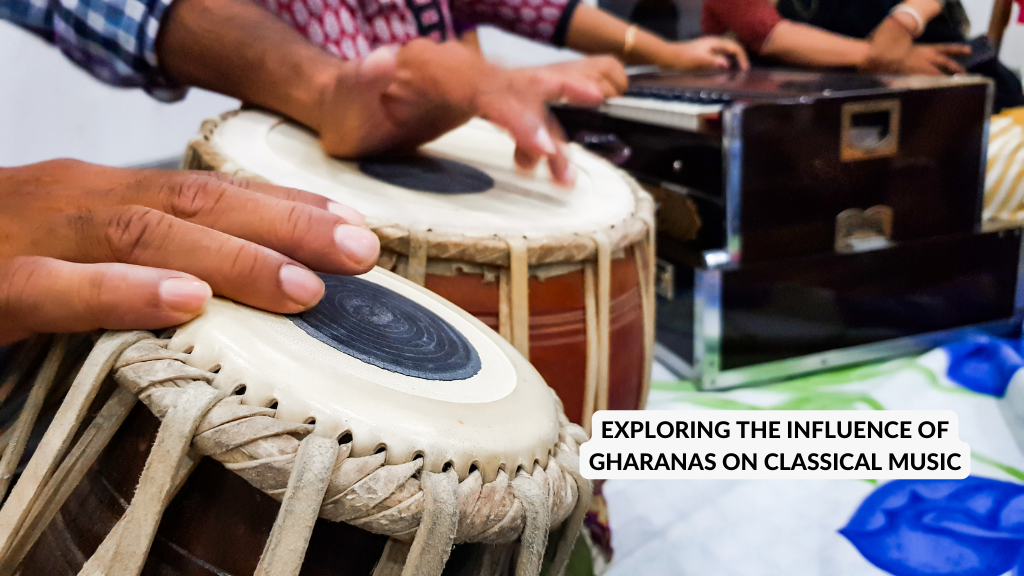Classical music is a broad and rich art form shaped by centuries of tradition and creativity. The Gharanas are an integral part of this musical heritage and have played a significant role in its evolution and development. In this exploration, we will delve into the origins, significance, and lasting legacy of the Gharanas. And examine their influence on Indian classical music’s melody and rhythm.
Understanding Gharanas:
Gharanas are like musical schools or families, each with its own unique style and approach to music. They were formed long ago by master musicians who passed down their knowledge and techniques to their disciples. Over time, these Gharanas became known for their distinct musical characteristics and contributions to the classical music tradition.
Preservation of Tradition:
One of the primary functions of Gharanas is to preserve and produce traditional musical practices. Musicians belonging to a particular Gharana learn not only the technical aspects of their craft but also the rich cultural and artistic heritage associated with it. Through strict training and dedication to tradition, they ensure that the essence of their Gharana is passed down from one generation to the next. Keeping the flame of classical music burning brightly.
Encouraging Creativity and Innovation:
While Gharanas are rooted in tradition, they also encourage creativity and innovation among musicians. Master musicians within each Gharana develop their own unique styles and techniques. And spontaneous approaches, enriching classical music with new ideas and expressions. This combination of tradition and innovation makes sure that Indian classical music remains vibrant and relevant in the modern world.
Influence on Instrumental Music:
Gharanas play a significant role in instrumental music, influencing musicians’ playing styles and techniques. For instance, sitar players hailing from the Imdadkhani Gharana are known for their complex meend (glissando) and taan (fast melodic passages), while tabla players from different Gharanas show distinct variations in stroke patterns, bols (syllables), and rhythmic improvisation. Each Gharana brings its unique flavour to instrumental music, enriching the classical music landscape with its distinct sonic palette.
Diversity in Vocal Music:
Vocal music also bears the impression of Gharanas, with each lineage contributing to the rich tapestry of classical singing styles. The Kirana Gharana, for example, is known for its focus on complex melodic growth and fine nuances, whereas the Patiala Gharana is celebrated for its powerful and emotive renditions. Each Gharana has its own distinct vocal techniques, repertoire, and aesthetic sensibilities, reflecting the diversity and depth of Indian classical music.
Cultural and Philosophical Dimensions:
Beyond their musical significance, lineage represents deeper cultural and philosophical dimensions. Each Gharana reflects the socio-cultural milieu and artistic sensibilities of its founders and practitioners, shaping not only musical styles but also broader aesthetic sensibilities. Through their performances, musicians express not only technical virtuosity but also emotional depth, spiritual sensitivity, and artistic vision, thereby enriching the cultural fabric of Indian classical music.
Conclusion:
In conclusion, lineage is the backbone of Indian classical music. By preserving and memorialising their unique musical heritage, Gharanas ensure the continuity and vitality of Indian classical music, enriching the lives of practitioners and audiences alike. As guardians of centuries-old traditions and motivations for artistic innovation, Gharanas remain essential pillars of India’s musical heritage, representing the timeless beauty and deep spirituality of classical music.

